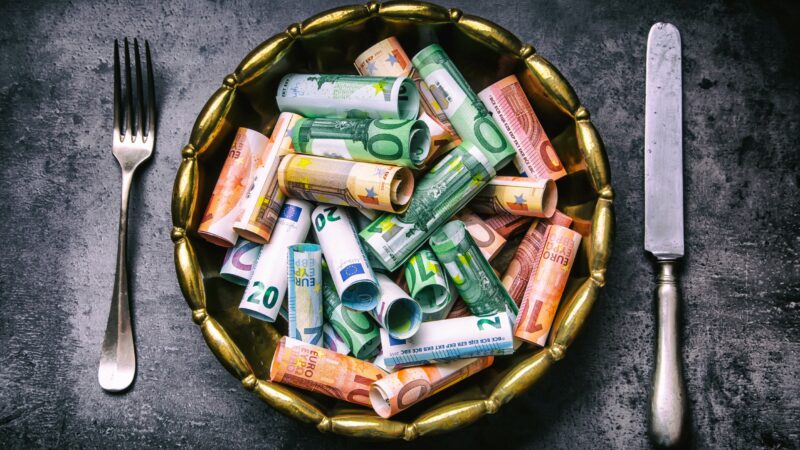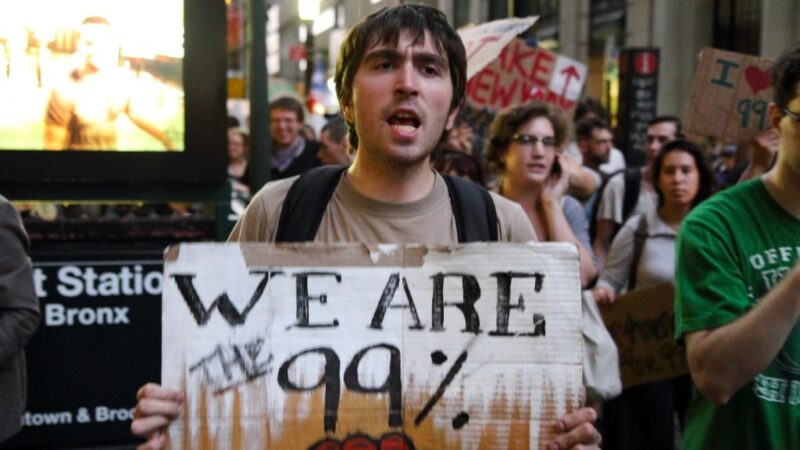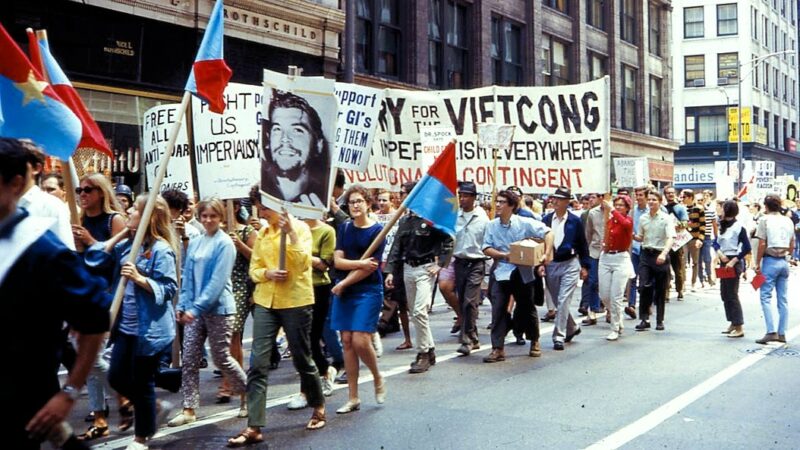 Academic building of the National University of Kiev-Mohyla Academy, where classes were taught in Latin in the 17th century. The building was erected in 1703 and expanded in 1735-1740 by Rafail Zaborovsky based on architect Johann Schädel’s design. After the great fire in Kiev in 1811, it was rebuilt and served as the research library of the current university until 2017 (Image: Wikimedia Commons)
Academic building of the National University of Kiev-Mohyla Academy, where classes were taught in Latin in the 17th century. The building was erected in 1703 and expanded in 1735-1740 by Rafail Zaborovsky based on architect Johann Schädel’s design. After the great fire in Kiev in 1811, it was rebuilt and served as the research library of the current university until 2017 (Image: Wikimedia Commons) The Ukrainian President Zelenskyy accuses Russia of a “genocide”: a genocide against Ukraine—and not only in connection with the massacre of Bucha. Meanwhile, news of mass graves with thousands of civilian victims is increasing. But criminal and international lawyers have been telling the public over the past weeks that the legal definition of genocide is precise and narrow. Even a few thousand Ukrainian civilians shot by the Russian aggressor would not suffice for such a charge. However, voices are now rising in Western states that speak of an incipient genocide in Ukraine.
The fear driving President Zelenskyy and the Ukrainians is not the physical destruction of the Ukrainian ethnic group, but the destruction of Ukraine as a people with its own national identity and culture, distinct from that of Russia.
Was Zelenskyy’s accusation after the Bucha massacre an exaggeration, or simply an emotional appeal with the intention of gaining more Western support? No, because there is a closer explanation that follows from the history of the relationship between Russia and Ukraine as well as Putin’s clearly stated wartime goal of a “denazification” of Ukraine. The fear driving President Zelenskyy and the Ukrainians is not the physical destruction of the Ukrainian ethnic group, but the destruction of Ukraine as a people with its own national identity and culture, distinct from that of Russia, which, after centuries of tutelage and domination, finally managed to find its own nationhood against the will of “big brother” Russia.
It is the fear of the extinction of a nation that has been Western-oriented since the Middle Ages that is foreign to the Eurasian tradition of autocracy that dominates in Russia. And it is the fear of a people with an identity that has endured through the centuries, fed by the liberal-egalitarian traditions of the Cossacks and by Western educational content.
The Ethnic and National Differentiation of the “Unequal Brothers”
One can read about this fascinating and convoluted history in the 2017 book published by Munich-based C.H. Beck Verlag “Ungleiche Brüder. Russen und Ukrainer vom Mittelalter bis zur Gegenwart” [“Unequal Brothers: Russians and Ukrainians from the Middle Ages to the Present”] by Swiss expert on Eastern Europe and professor emeritus of history at Vienna University, Andreas Kappeler. It has already appeared this year in 2nd to 4th printings—unchanged both in content and relevance. The book shows that the Rus’—more precisely “Russians”—and Ukrainians form two different nations with different cultures, even if the cradle of both is the “Kievan Rus’,” a ruling federation converted to the Orthodox faith in 988. It was founded by Norman Varangians who, as the original ruling class, were soon absorbed into the East Slavic tribal population.
However, throughout its two hundred years of domination by the Mongols, “northeastern Rus’ became isolated from the rest of Europe.” Western and southwestern Rus’, on the other hand, came under the rule of the Grand Duchy of Lithuania and the Kingdom of Poland, respectively, for 300 and 450 years. This “separation into different states and cultural areas”—according to Kappeler—“reinforced ethnic differentiation and created the basis for the formation of a Russian and Ukrainian nation.”
In the east, the rise of Moscow followed in the 14th century. In competition with the Grand Duchy of Kiev, the Grand Duchy of Moscow came into being. In 1547 Ivan IV (“Ivan the Terrible”) was crowned the first Tsar, legitimized by the Orthodox Church “as an unlimited ruler responsible only to God.” The Russian autocracy, inspired by the Mongolian but also the Byzantine Orthodox tradition common to Russians and Ukrainians, consolidated and gradually expanded into a multi-ethnic empire whose citizens were not called Russians (russkie) but Rossiyane (rossijane). Only Putin began to speak of “Russians” again and therefore claims—historically incorrectly—that everywhere ethnic Russians live there is Russia.
Ukrainian Western Orientation and Alliance with the Tsars
In contrast to Russia, which emerged from the Moscow Grand Duchy, the Ukrainians, who were oriented toward the West, never succeeded in forming their own statehood due to being part of Poland-Lithuania. This did not prevent them from forming the foundations of an independent national identity and having it recognized as such by their environment. Their culture opened up to the West. A separate “Ruthenian” literary language and a Ukrainian education system emerged, with Kiev as its flourishing center. In Kiev’s Mohyla College, which according to Kappeler was “a brilliant educational institution that combined Western rationality with Orthodox spirituality,” Latin was still the language of instruction in the first half of the 17th century.
In the 17th century, the Ukrainian Cossacks succeeded in “liberating most of Ukraine from the rule of Poland.” They created the “hetmanate,” a Ukrainian state federation “on the egalitarian pattern of the Cossack armies.” The peasants were liberated and “declared free Cossacks.” In the struggle against Catholic Poland, support was now sought from the tsar.
Henceforth, with the Pereyeslav Agreement (1654), Ukrainian history was linked to Russian history. It was an “unloved alliance” that was legitimized by Moscow “with the protection of Orthodoxy and not with territorial claims to the heritage of Kievan Rus’.” This was soon to change when the Moscow tsars began to call themselves “autocrats of the whole Great and Little Rus’” and incorporated Ukraine into their domain. This was the beginning of the thorny and convoluted history of relations between the brothers, who–although being so unequal—came from the common cradle of “Kievan Rus’”.
“Big Russia” and “Little Russia”: The Big and the Little Brother
Increasingly referred to scornfully as “Little Russians,” the Ukrainians were regarded as a lovable and musical, but uneducated, peasant people. The “big brother” reacted dismissively and, if necessary, with cruelty to any aspirations to independence on the part of the “little brother.” Clichés and divergent national narratives were formed and solidified. The terminological distinction between “Big” and “Little Russians” had a completely different origin and had nothing to do with the size or significance of the two Russian territories. It originally referred solely to the “size” of the geographical distance of the two parts of medieval Rus’ from the seat of the Orthodox patriarch in Constantinople.
The process of Russian nation- and state-building progressed steadily along autocratic lines and a Russian multiethnic empire was formed, culminating in the conquest of the territories north of the Black Sea and now part of Ukraine, and the annexation of Crimea (1783) under Catherine the Great. Meanwhile, Ukraine continued to miss out on the formation of its own nationhood. Members of its upper class could make a career only in Russia, and that also meant speaking Russian. The common people—the peasants—now became the prototype of the Ukrainian. Ukrainian, which had once flourished as its own literary language, was then considered a dialectal form of Russian.
From the Awakening of National Consciousness to the “Ukrainian People’s Republic”
In memory of Ukraine’s past as a cultural nation influenced by the West, a new Ukrainian national consciousness also arose—not coincidentally—in the 19th century. Amid the turmoil of the Russian Revolution in 1917, this led to the proclamation of the “Ukrainian People’s Republic” (UNR) as part of a Russian federation. This was followed in 1918 by the proclamation of independence from Soviet Russia and in 1919 by unification with the Western Ukrainian People’s Republic, which had been formed on the territory of Galicia, formerly part of the Habsburg Dual Monarchy.
Also in 1919, the Red Army was driven out of Kiev, but the UNR sought recognition by the Paris Peace Conference to no avail. It also had little support among the majority Russian urban population. In the same year, the Soviet Communists again invaded Kiev and seized Ukraine and the UNR government went into exile; eventually, Stalin formed the “Ukrainian Soviet Republic” in the League of Nations of the Soviet Union.
In the relatively liberal 1920s, systematic Ukrainization began, leading to a period of cultural flourishing in Ukraine. Ukrainian was introduced as a compulsory language in schools and was generally privileged over Russian. Ukrainian also became an official language. “The goal was to re-ukrainize Russified Ukrainians … Ukrainian went from being a peasant vernacular considered only a dialect to the official language of the republic,” although in practice Russian retained an important position.
Forced Collectivization, Famine, and Stalinist Terror
However, Stalin set “new priorities” from 1928 on, when forced industrialization and forced collectivization of agriculture began. Alleged nationalist tendencies in Ukraine were suddenly met with suspicion by the “big brother.” The first center of Soviet industry was created in the Donbas. More and more peasants migrated to the industrial cities, where they became linguistically Russianized. Hundreds of thousands of kulaks—rich peasants—were deported to Siberia or murdered as “class enemies” in the course of forced collectivization.
However, the great famine (Holodomor), brought about by Stalin with brutal means, remained in the collective memory above all else. The grain harvested by the peasants was systematically and forcibly requisitioned and sold abroad; Stalin used the proceeds to finance industrialization. 3.5 million Ukrainians starved to death, mostly peasants; the total number of victims of the famine in the Soviet Union was 6 to 7 million. In 1938, amid the great purges, Stalin designated Nikita Khrushchev, a Russian from the heavily industrializing Donbas, as head of the Ukrainian Communist Party. Ukraine was absorbed into the Russia-dominated Soviet Union in the name of Soviet “friendship among nations.” “The consciousness of being a victim of Soviet communism as a nation is an important element of Ukrainian national consciousness today.”
Collapse of the Soviet Union and Striving for the West
It was not until December 1, 1991, that Ukraine was to regain its independence, with the traditional trident in its coat of arms—the state symbol of the UNR from 1917! Since then, Ukraine has been striving unceasingly toward the West, where it belongs, for historical and cultural reasons. In accordance with its egalitarian and liberal tradition, it wants to organize itself democratically and according to the rule of law. In November 2013, the Association Agreement with the EU was on the table for signature. Despite all the obstacles—institutional and economic backwardness, widespread corruption, and divergences with the Russian minority, which is especially strong in the east—it offered the hope of finally being able to irreversibly embark on the path to the West and definitively shake off the grip of its “big brother.”
Russia’s President Putin responded to the mass protests triggered by then-President Yanukovych’s refusal to sign the Association Agreement with the EU—the “Euro-Maidan”—from November 2013 to February 2014, as well as Yanukovych’s flight and ouster, by annexing Crimea, which Khrushchev had incorporated into the Ukrainian Soviet Republic in 1954—the year of the 300th anniversary of the Pereyaslav Agreement. Putin also responded with the systematic buildup of pro-Russian armed militias in the Donbas, which fought alongside regular Russian troops against Ukrainian forces. It was the beginning of the Russian-Ukrainian war, and the doom began to take its course. It reached its temporary climax with Russia’s invasion of Ukraine on February 24, 2022.
According to Andreas Kappeler, the aim back in 2014 was “to prevent, at all costs, Ukraine from establishing and stabilizing itself as a democratic state committed to European values.” Putin blamed Russian “security interests.” In reality, he was then as now concerned with the prevention of a free, democratic and economically successful Ukraine undermining the Moscow model of rule right on Russia’s doorstep! To this end, Putin, in the best Russian imperial tradition, wants to restore the “unity of historic Russia,” as he declared in 2014. Ukraine, as a democracy turned toward the West, must, in his mind, disappear. Because, Kappeler says, in “no other post-Soviet state, with the exception of the Baltics, was a parliamentary democracy established with correct elections leading to changes of power and a largely free media.” This is indeed poison for “Russian security” in Putin’s reading.
Russian-Ukrainian War and “Denazification”
Ukrainians today experience all this as the Russian program to destroy Ukraine: its national and cultural identity. Therefore, they rightly perceive the current war as an attempt at “genocide.” Under such distress, fine legal distinctions are not called for. Russia’s intentions are clear. “Denazification” means everything Western, liberal, everything that opposes Putin’s conception—which goes back to the Russian fascist Ivan Ilyin (1883-1954)—must disappear from Ukraine. For Putin, everything Western is “Nazi” because it is directed against Russia’s existence and soul, just like the Nazi army of 1941 that was advancing from the West.
“Denazification” therefore means in plain language: there must be no independent Ukraine and no independent Western-oriented Ukrainian culture and nation that contrasts with Russia’s, and certainly there must be no independent state that embodies this culture immediately on Russia’s doorstep.
Even if such a program cannot be called a genocide in the legal-technical sense, from the Ukrainian perspective it is nevertheless experienced as an extermination of a people and nation, along with its culture. No mercy can be expected from anyone who carries out such an act under the formal guise of “denazification” and therefore invades a country with an army of 150,000 men. Liquidations and deportations, and finally re-education of the masses, will inevitably follow the demilitarization demanded by Putin—and precisely such demands are currently being made in Russian state media such as the RIA Novosti agency. There, a recent “Denazification manual” was published, and it is still online (along with an English translation) The main idea of this “manual” is that a Ukrainian who does not want to be Russian is a Nazi and therefore an object of “denazification.”
Accusation of Genocide: “Not Absurd”
For the officers and soldiers of the Russian armed forces it was a bitter surprise because the domestic indoctrination had prepared them for the opposite: The Ukrainian population received them on February 24, 2022, not with jubilation as liberators, but with the mass assembly of Molotov cocktails, inflicting a humiliating defeat in the battle for Kiev. From this perspective, the massacred civilians of Bucha and other places have now become a warning sign. In the battle for Donbas, which is now underway, it is a question of existence or non-existence for Ukraine as a people, a nation, and a culture. For in the eyes of the Russians, every resisting Ukrainian is now subject to “denazification.”
Ukrainians know what they will face if they become the demilitarized prey of Putin’s Russia. For them, that is “genocide”: the murder of their culture. As the internationally renowned expert on criminal and international law, Stefan Trechsel, recently opined in an interview with the Neue Zürcher Zeitung, “the accusation of genocide is not absurd and must be investigated” because “Putin wants to destroy Ukraine as a state entity.” However, it should be added, not only as a state entity, but also in terms of its national and cultural identity.
Slowly, therefore, the number of voices speaking of genocide in the case of Russian intentions toward Ukraine is also growing. Even U.S. President Biden has used the word, although this will make little impression on experts of international law and international criminal law. Nevertheless, Moscow’s game is slowly becoming better understood. What was passed off as “security interests”—how many fell for this Russian newspeak!—is now becoming clear in its true content: It is about the eradication of Ukraine as an independent nation that belongs, with its ideas and values, to the West. The “little brother” must go “home to the empire.” This, and nothing else, is what “security” means in Putin’s mouth today, because otherwise Russia’s hegemonic power over Eastern Europe and Putin’s own power in this empire are in danger.
Literature:
Andreas Kappeler. Ungleiche Brüder. Russen und Ukrainer vom Mittelalter bis zur Gegenwart [“Unequal Brothers. Russians and Ukrainians from the Middle Ages to the Present”]. Verlag C.H. Beck, Munich 2017 (2nd-4th reprint, 2022).
Translation from German by Thomas and Kira Howes.
Share on



